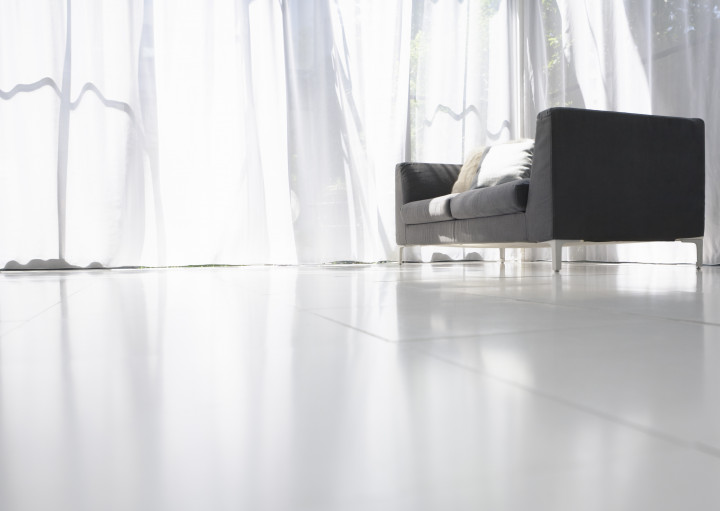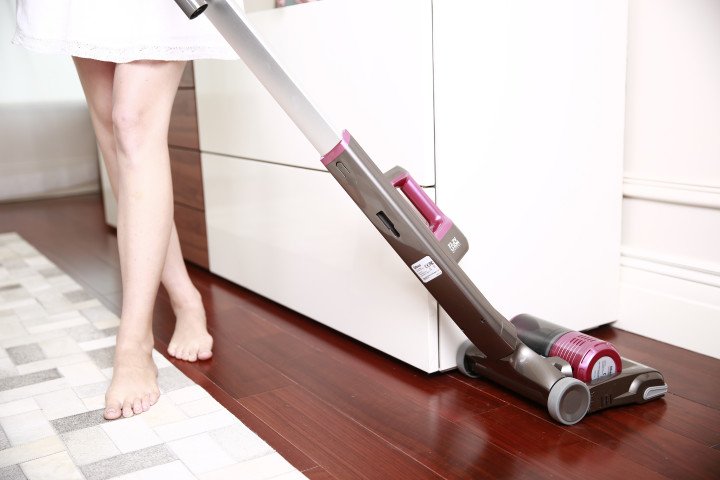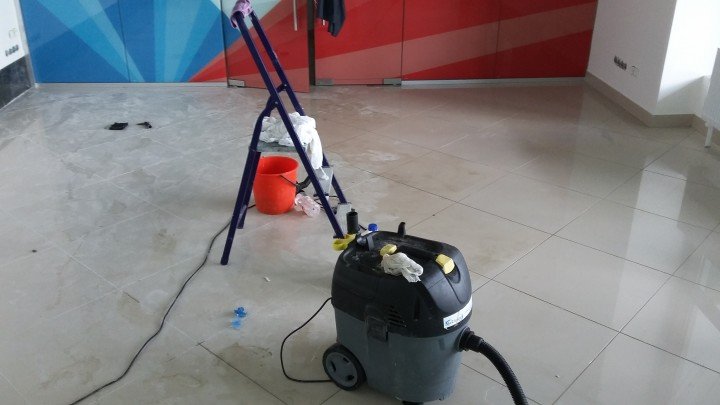Last Updated on July 9, 2023 By Emma W. Thomas
Yes, a vacuum cleaner can undoubtedly clean tiles, making floor cleaning much easier and more efficient. Vacuum cleaners are beneficial for tile floors as they effectively confine dust and particles, preventing dirt from spreading throughout your home.
Is a Vacuum Cleaner Effective for Cleaning Tiles?
Yes, a vacuum cleaner is effective for cleaning tiles. Vacuum cleaners are versatile cleaning tools that can effectively remove dirt, dust, and debris from tiles. They work by creating suction that pulls in the dirt and debris, trapping it in a bag or canister. Many vacuum cleaners come with attachments and settings specifically designed for different types of floor tiles.
When cleaning tiles with a vacuum cleaner, it is recommended to use the appropriate attachment depending on your floor tiles. These attachments typically have bristles or soft brushes that gently agitate the surface to dislodge dirt and debris, allowing the suction to remove it effectively. Some vacuum cleaners also have settings that can be adjusted for different floor tiles.
.

Why use a vacuum to clean tiles?
Using a vacuum cleaner to clean tiles offers several advantages over traditional sweeping methods. Firstly, vacuuming effectively traps dust and particles within the cleaner instead of pushing them into the air and the tile crevices, ensuring a more thorough cleaning. Besides their efficiency, vacuum cleaners make the task both quicker and easier, as they are effortless to operate and require minimal effort. Additionally, vacuums tailored for tile floors provide the appropriate cleaning methods and accessories, resulting in a meticulous and damage-free tile cleaning experience.
Benefits of using a vacuum for tile cleaning
- Enhanced efficiency: Vacuum cleaners offer a more efficient way to clean tile floors than traditional methods such as brooms or mops. They ensure that dirt and particles are effectively suctioned into the cleaner instead of being spread around your home. This results in cleaner, more hygienic living spaces, while also saving time and effort.
- Versatility: Vacuums are versatile and are designed for various types of tasks, including tile cleaning. They often come with specialized attachments and settings specifically meant for cleaning tiles, so you can be sure that the job is done correctly and without causing damage to your floors.
- Improved air quality: Using a vacuum cleaner with a high-quality filter system helps prevent dust and allergens from being released into the air, resulting in better indoor air quality. This is especially beneficial for those who suffer from allergies or respiratory issues. Overall, vacuuming tile floors not only leaves your floors looking clean but also contributes to a healthier home environment.
Not all vacuums are suitable for tile floors
Vacuuming tile floors can sometimes be a challenge due to the unique characteristics of the surface. However, there are models specifically designed for cleaning different types of floorings, including tiles. These vacuums come equipped with powerful suction and specialized features to efficiently clean and maintain your tile floors.
When choosing a vacuum for your tiles, consider factors like size, corded versus cordless, and additional attachments for optimal results. Remember that vacuuming alone cannot replace mopping, but it does provide an essential first step in the cleaning process. Popular choices among vacuum cleaners for tile floors include the BISSELL Crosswave Pet Pro and BISSELL Spinwave.

Considerations when choosing a vacuum for tile floors
Choosing the right vacuum for tile floors can be a challenge, as different factors come into play.
- First, consider the suction power of the vacuum, as it needs to be strong enough to pick up debris from crevices between tiles.
- Second, take note of the vacuum’s attachments, like those designed for cleaning shelves and countertops.
- Third, look for a vacuum that is easy to maintain, as this can impact your overall satisfaction.
- Fourth, think about recurring costs, such as replacement filters or bags. Finally, consider a vacuum with mopping capabilities for tackling liquid spills and dried-on stains in kitchens.
Features to look for in a vacuum for tile floors
When searching for the perfect vacuum cleaner for tile floors, consider the following six features to ensure you get the best results:
- Suction power: A vacuum with strong suction can effectively remove dirt and debris from the crevices between tiles, ensuring a thorough cleaning.
- Lightweight design: A lightweight vacuum is easier to maneuver around tight spaces and reduces the strain of carrying it around your home.
- Attachments: Look for vacuums that come with special attachments, such as a soft roller head for polishing and cleaning tiles.
- Mopping capabilities: Vacuums with built-in mopping features are perfect for cleaning liquid spills or dried-on stains on tile floors.
- Battery life: Cordless vacuums should have a long battery life, allowing you to clean your entire home without stopping to recharge frequently.
- Easy to maintain: Opt for a vacuum cleaner that is simple to clean and maintain, with minimal recurring costs for replacement parts or filters.
How to prevent damage while vacuuming tile floors
To prevent damage while vacuuming tile floors, it is crucial to choose a vacuum with tile-friendly features. Opt for a vacuum cleaner with a non-motorized brush, as it can easily glide across the surface without scratching the tiles.
Additionally, ensure the vacuum has a suitable filter system to prevent electrostatic force from attracting dirt back onto the floor after cleaning.
Lastly, be mindful of the cleaning settings on the vacuum and select the appropriate option for your specific tile type, as different tiles may require varying cleaning methods.
Best practices for vacuuming tile floors
- Choose the right vacuum: Opt for a vacuum cleaner designed for tile floors, with strong suction power and a soft roller head brushbar to clean and polish the tiles without scratching them.
- Use the right attachments: Utilize vacuum attachments, such as a suction-only wand or floor tool, for efficient tile cleaning.
- Vacuum regularly: Maintain a regular vacuuming schedule to prevent dirt and dust buildup on your tile floors.
- Clean spills promptly: To avoid stubborn stains, clean spills as soon as they occur.
- Use a gentle cleaning solution: Opt for a mild detergent and hot water or a special tile cleaning solution to mop your tile floors after vacuuming.
- Don’t forget the grout: Use a special or homemade solution to clean the grout lines between tiles, as vacuuming alone won’t restore their whiteness.
- Maintain separate vacuuming and mopping steps: Vacuum your tile floors first to remove dirt and debris, then mop them for a thorough cleaning and sanitizing.
- Choose cordless or corded vacuums based on your needs: Consider factors like home size, convenience, and power outlet accessibility when choosing between cordless and corded vacuum cleaners.

Alternatives to vacuuming for tile floor cleaning
- Sweeping: For daily cleaning of tile floors, using a soft-bristled broom or dust mop can effectively remove loose dirt and debris. Make sure to sweep along the grout lines as well to keep them clean and grime-free.
- Mopping: A regular mop or microfiber mop can help clean your tile floors by removing light stains and dirt. Use a mix of warm water and a mild detergent or cleaning solution to dampen the mop, work in small sections, and let the floor air dry.
- Steam Cleaning: A steam cleaner effectively cleans and sanitizes tile floors without the need for chemicals. It loosens dirt, kills bacteria, and removes grime from tiles and grout lines, making it an ideal cleaner for homes with kids or pets.
- Spot Cleaning: For stubborn stains, spot cleaning with a soft-bristled brush and a mixture of baking soda and water, or vinegar and water can help gently scrub away any residue without damaging the tile surface.
- Grout Cleaning: For dingy or discolored grout, use a specially designed grout cleaner or a homemade solution of equal parts water and hydrogen peroxide applied with a stiff-bristled toothbrush.
- Tile and Grout Sealing: To protect your tile floors from stains and discoloration, consider sealing the tiles and grout lines with a high-quality sealer. This process should be done periodically, depending on the type of tile and the amount of foot traffic.
- Buff and Polish: Tiles can lose their shine over time, so using an electric buffer or polishing machine can restore their luster. Apply a tile polish following the manufacturer’s instructions, then buff away for a shiny finish.
- Regular Maintenance: Keeping the tile floors clean and well-maintained by developing a regular cleaning schedule and promptly addressing spills or stains can help preserve their appearance.
- Professional Cleaning: If your tile floors require deep cleaning or specialized treatment, consider hiring a professional tile and grout cleaning service to restore your floors to their original luster.
Conclusion
In conclusion, vacuum cleaners have proven to be an effective and efficient tool for cleaning tile floors. With the right choice of vacuum, including suitable features and functionalities, homeowners can easily maintain their tile floors and keep them looking pristine. Advancements in vacuum technology, such as robotic vacuum cleaners, have made the process even more convenient and time-saving. So, there’s no reason to shy away from using vacuum cleaners in maintaining a clean and beautiful home with tile floors.
References:
Emma is a graduate of Domestic Science or Family and Consumer Sciences (Home Economics) from the University of Wisconsin. She has 7 years of experience Working with the strategic section of BestBuy and now writing full-time for Homeeon.
From Managing the Home, Interiors, Cleaning, and Exteriors to Gardening and everything about Making A Home Liveable – is her passion and this Homeeon is the result of this.
Emma loves decorating her home with the best stuff found online. She cares about quality over anything and writes reviews about them here in Homeeon. Get in touch with her over Pinterest.
Keep reading her blogs.
